There’s a good reason why hardwood floors appear more often under foot in Patrick Ahearn architecture than any other material. Hardwoods impart a nostalgic feeling of home, and provide defining clues for the narrative of a house. The theme and style of a residence is instantly conveyed from the moment a visitor steps into the front door, whether onto wide planks filled with nails and knots, smooth tight floors bleached to beachy grey, rich dark stained herringbone patterning, or a plethora of other options. While the breadth of wood species, sizes, and finishes is exhaustive, there are choices we consider time and again to help tell the story of a home. Read on for our rationale.
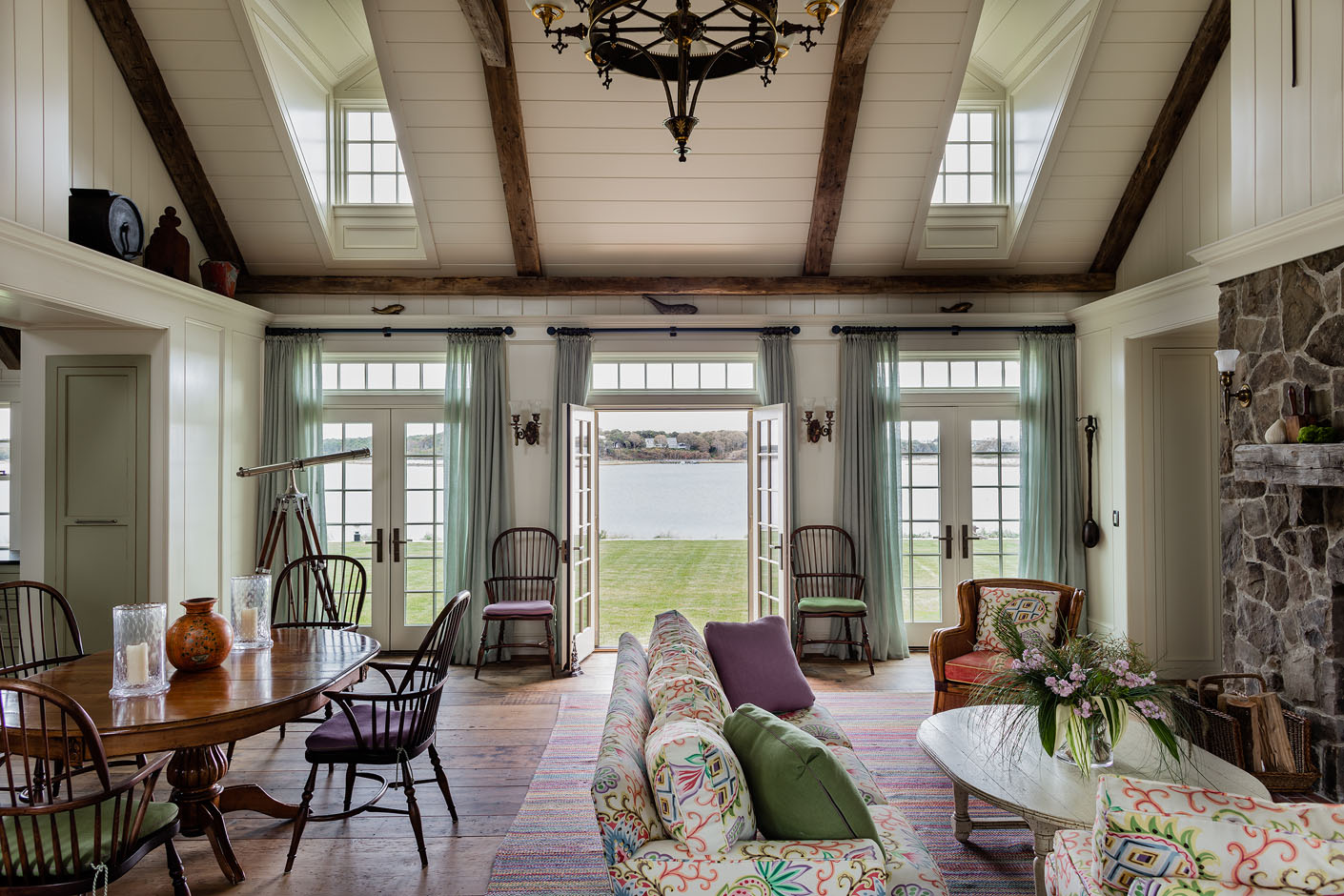
Material and width
To maintain a home’s sense of authenticity it is critical to match the wood species and width of planks to the period and style of the residence. In antique homes, we specify wider floors in softer woods like Southern Yellow Pine or Fir. These softer species will show scratches, dents, and dings, and the variation is all part of their story, imparting a true patina of age. Six- eight- and ten-inch widths are typical and at times we consider a mix of widths to add texture, especially in historic or rustic properties. Reclaimed floors add distinct character and often can be recut, resawn, and squared off to communicate a genuine yet updated storyline. In more modern homes, we consider a closer, tighter floor with consistent dimension that will easily take stain. In many cases White Oak is specified for its density and hardiness—it is often preferred by clients who seek a floor that will stand up to the wear and tear of family, pets, and entertaining. No matter the material, we steer clear of the common 2 ¼” floor, opting instead for wider planks that could have been original to the house when it was originally built.
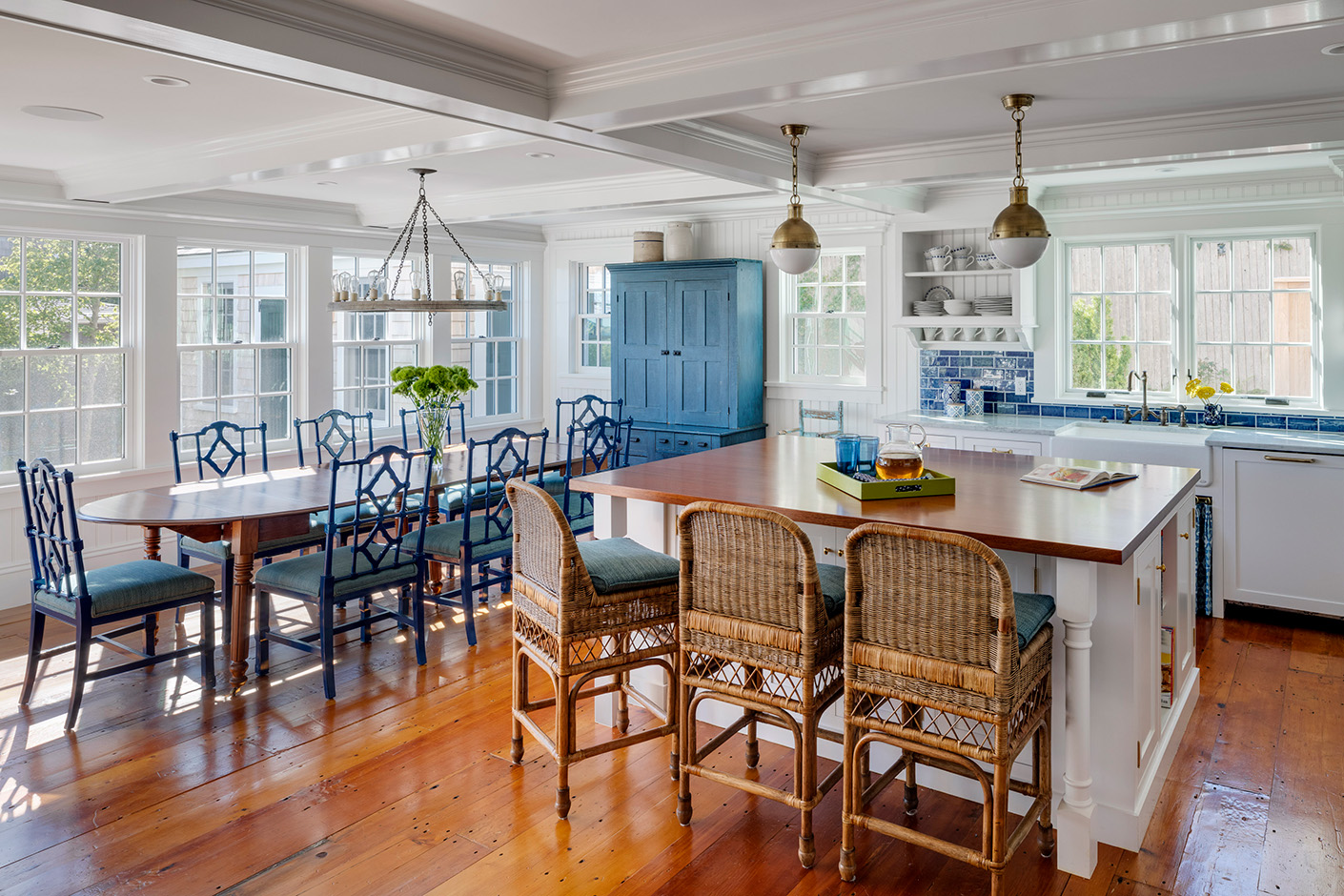
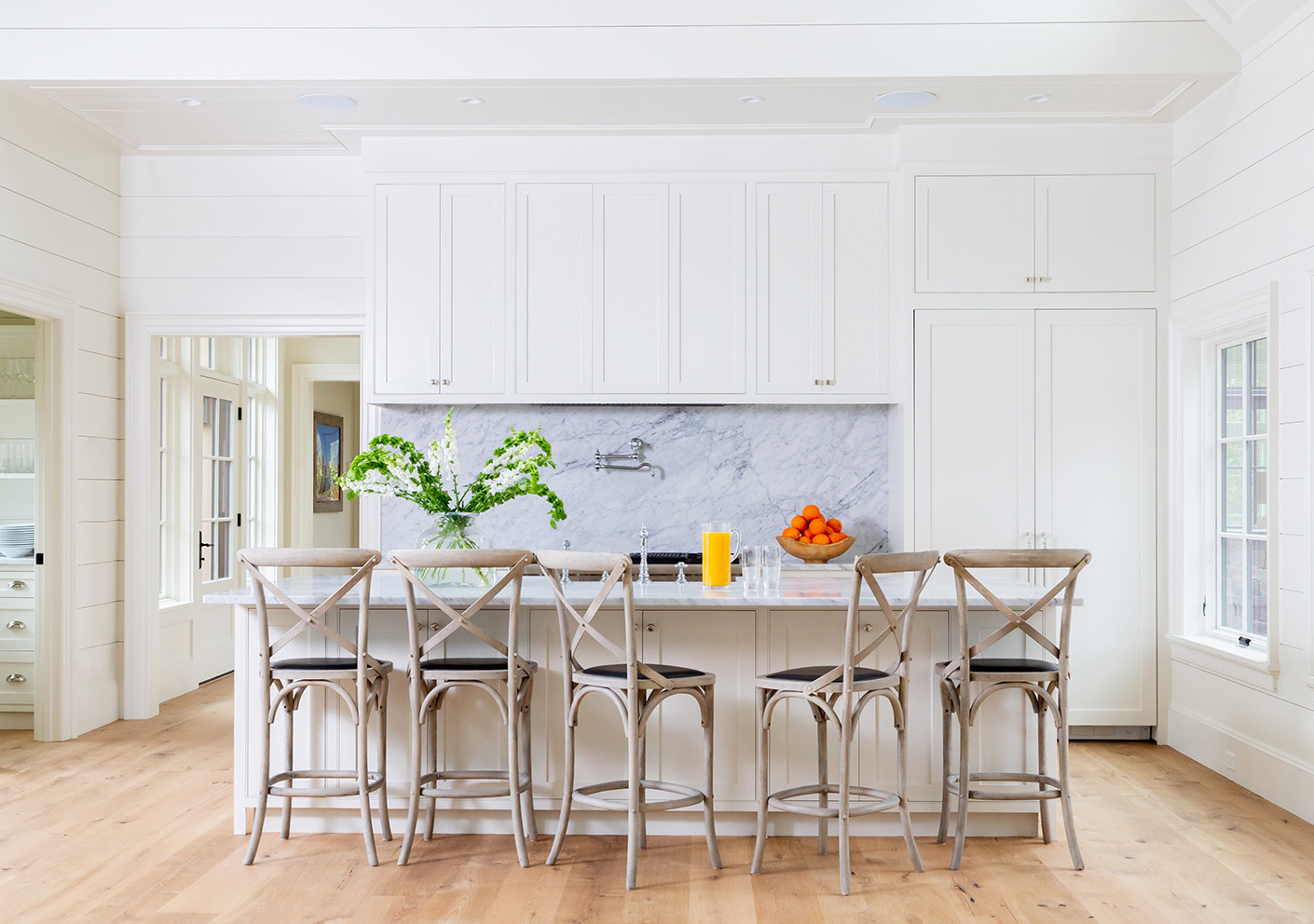
Color and stain
Ebony floors, bleached floors, every shade of blonde and painted patterning—trends come and go when it comes to coloration. In more than forty years practicing timeless architecture, there are two options that have been used more often than not in our residences. English Chestnut is a preferred color for its timeless shade of medium brown, and for those seeking a darker floor, Dark Walnut is an often-selected deep chocolate hue. Take special care when refinishing floors of unusual wood varieties which are often seen in historic homes. In these cases, it is key to test multiple brands and colors to assess how a particular floor takes a specific stain before making a selection.
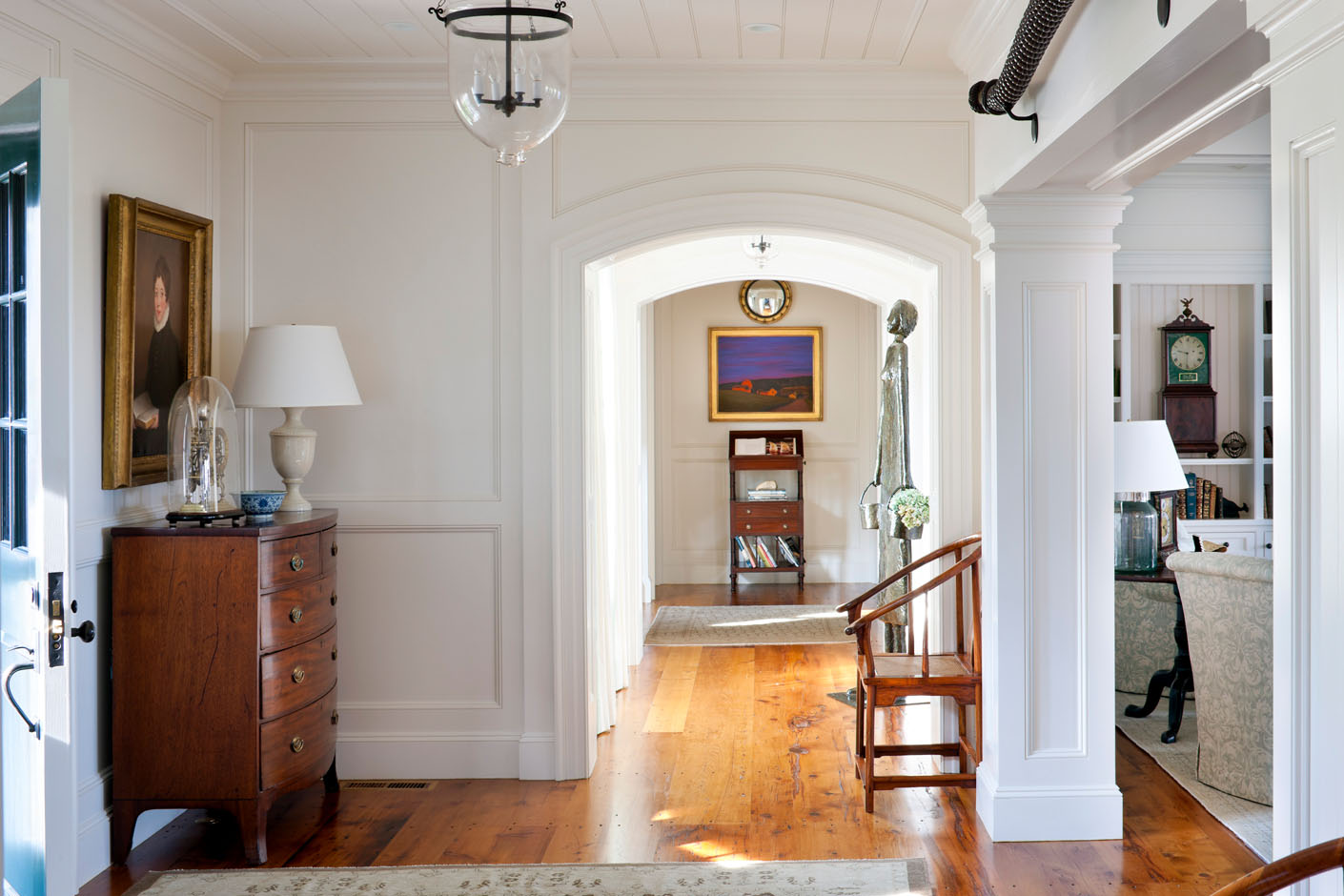
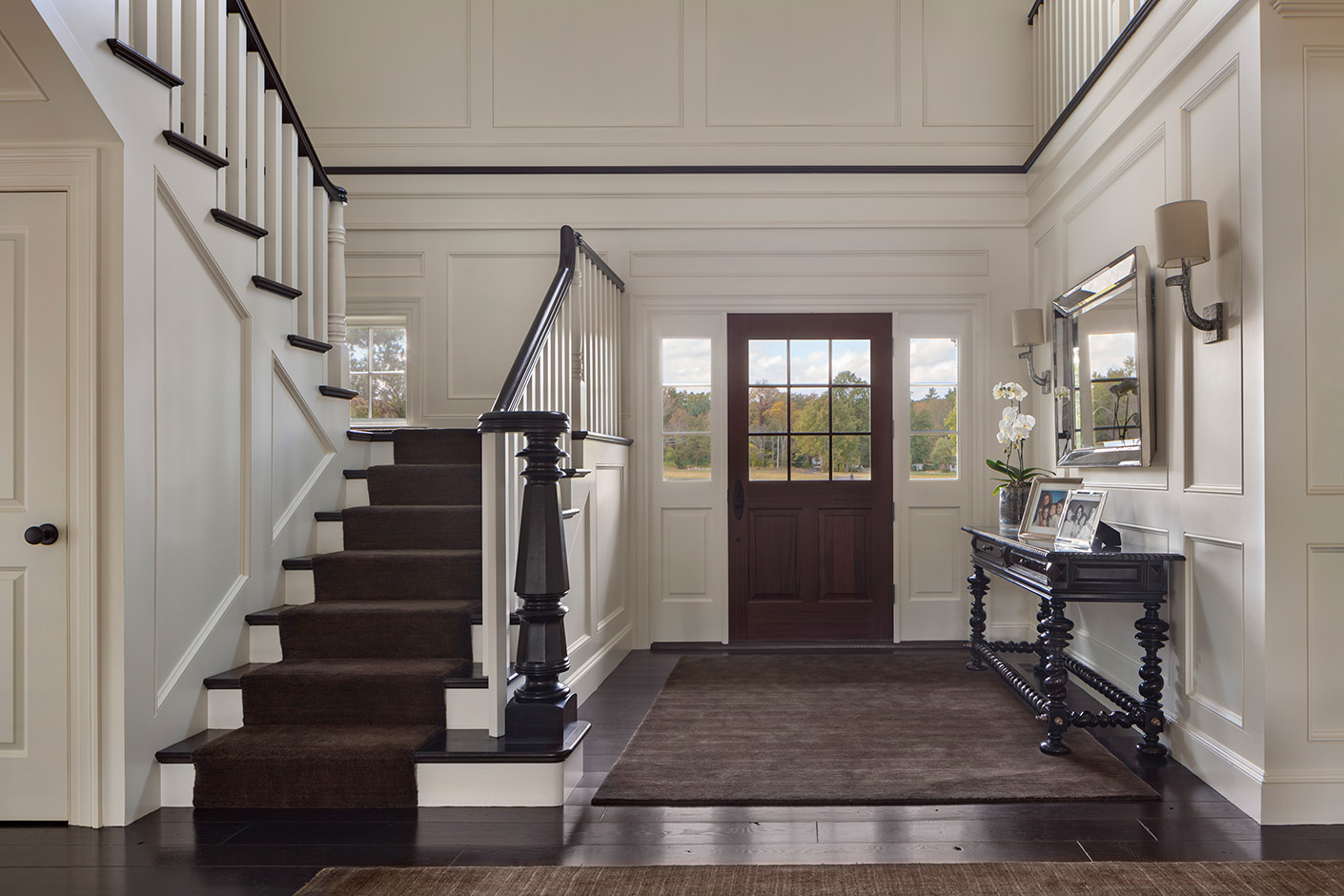
In addition, when opting for reclaimed floors, a stain may overcomplicate the composition. Particularly for applications in barns and rustic outbuildings, consider simply screening reclaimed flooring and applying a matte finish urethane sealer which will allow all of the rich imperfections to shine through.
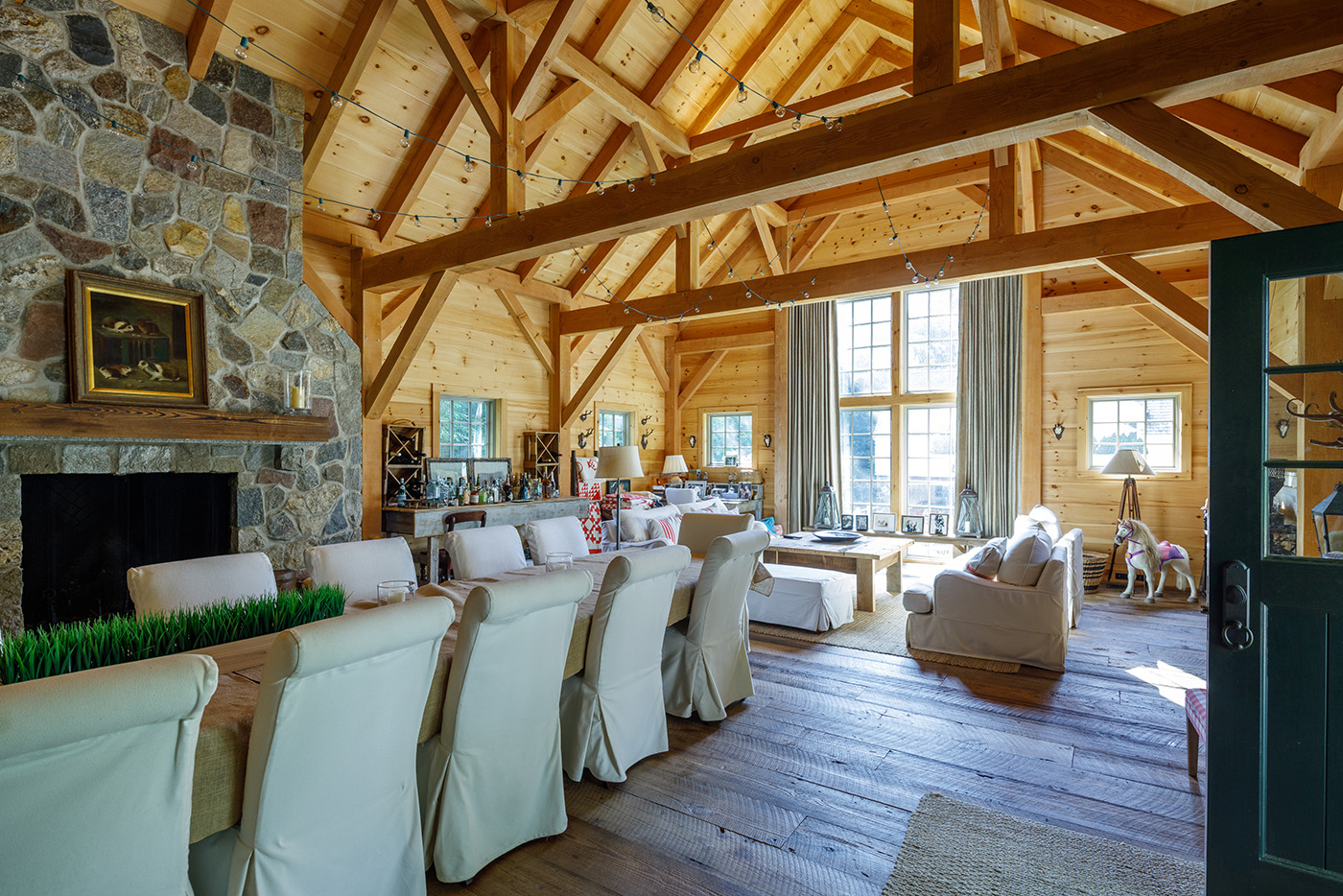
Wood patterning and inlays
Especially in a series of rooms that are open to each other, patterning and inlays can provide cues of transition. To outline individual spaces, we often opt for a two-plank border around the perimeter. Inside smaller formal areas like foyers, within that border a herringbone pattern may be inset. In a larger room, or within a central spine featuring a series of cased openings, flooring may be laid inside each border in a running bond opposite of the direction that a person would traverse the space. This subtle patterning elevates the experience and can make a narrow gallery seem wider. Even though it’s all on the same plane, the additional layer of information clearly defines each area, and cues the transition from one room to another.
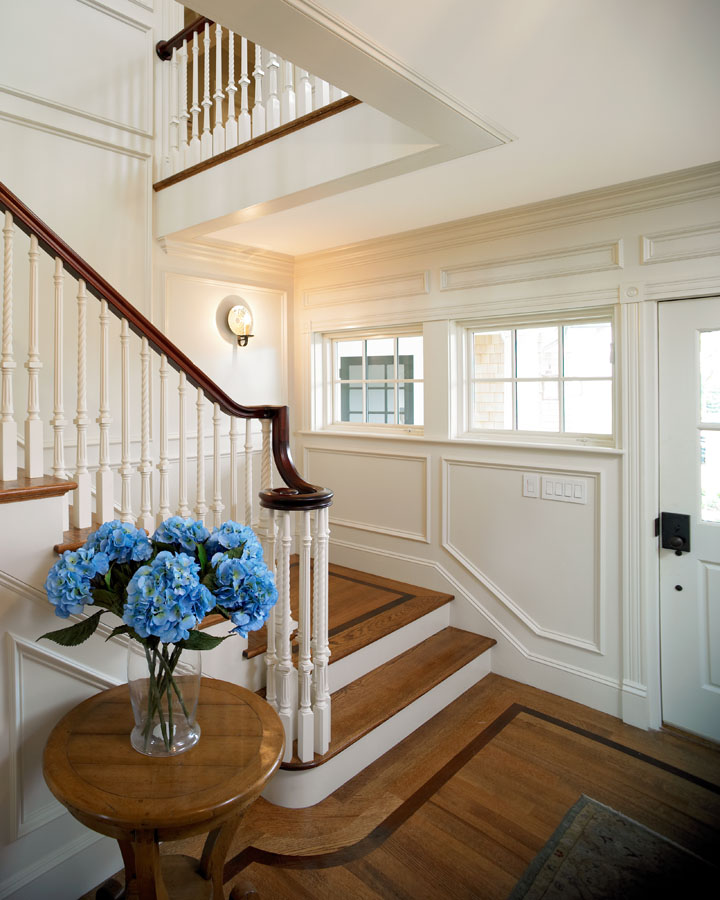
Wood alternatives
In recent years dramatic improvements have been made in engineered wood flooring, laminate wood-look floors, and vinyl plank wood lookalikes. We specify these products only in areas where there may be a moisture issue—basements in particular—and also for commercial applications. We do not favor them for main living areas of a residence, but do recognize their utility in certain circumstances.
If thoughts of flooring have you reconsidering your floor plan, we invite you to contact us to learn how we might approach your project. In the interim, we invite you to find inspiration in our portfolio.